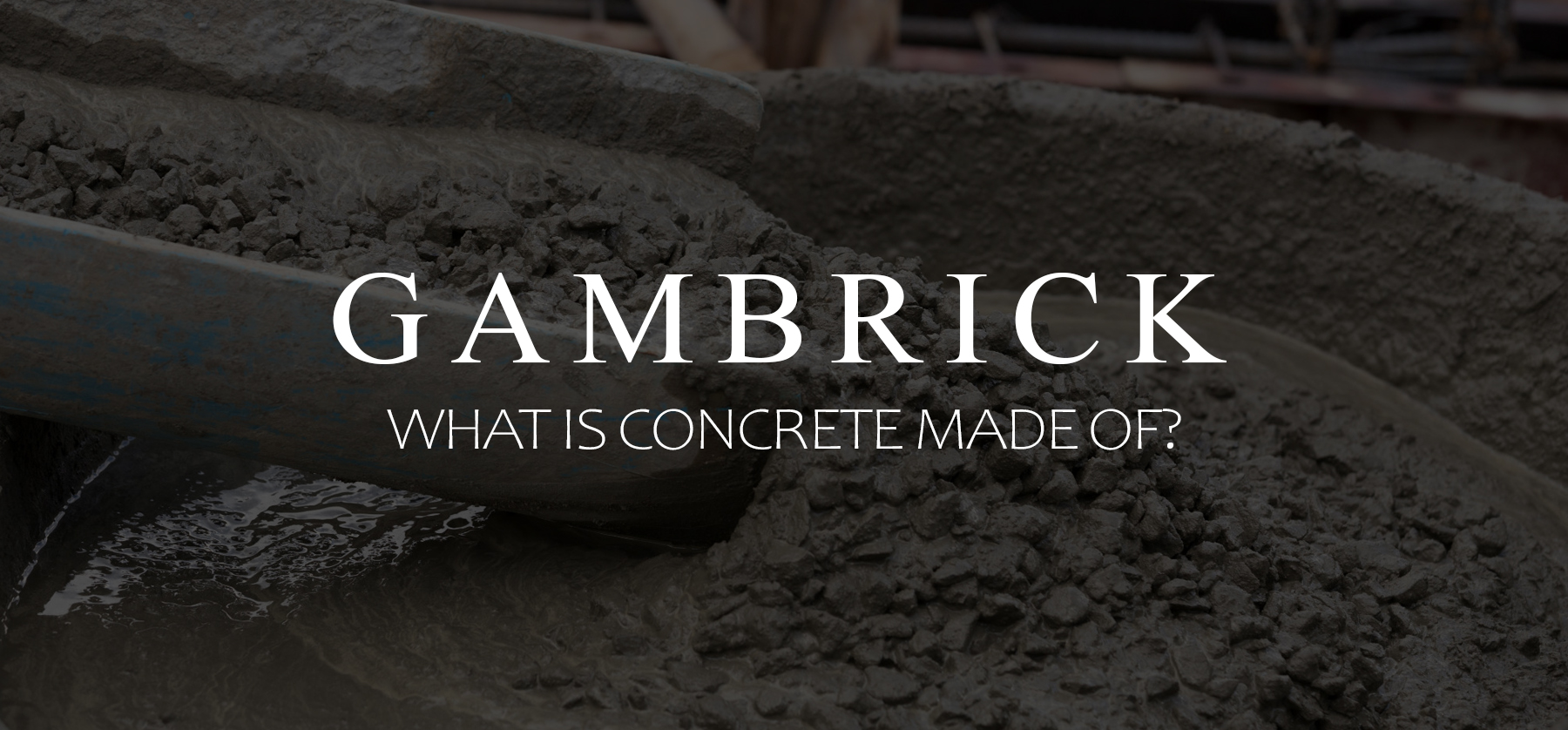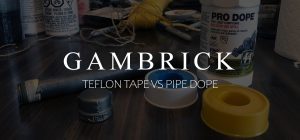
What Is Concrete Made Of?
One of the main reasons why concrete is such a popular building material is how easy it is to make. A typical concrete mix is made up of approximately 10% cement, 20% air & water, 30% sand, & 40% stone. This is called the 10-20-30-40 Rule. For over 25 years, this has been the basic mixture I use on all my masonry jobs to create very strong and durable concrete. It’s also fairly cheap, easy to work with, and the materials are readily available.
Concrete and cement are not the same thing, although the terms are sometimes used interchangeably. Cement is the active ingredient in concrete that chemically reacts with water to form a paste. That paste then dries and hardens through a process called hydration. This is commonly known as the curing process and can take around 28 days to fully complete.
Dry concrete powder is made from cement, stone, and sand mixed in varying amounts called the mix ratio. The specific ingredients used and their ratios is what dictate the concrete’s attributes like strength and durability.
Concrete is a very versatile building material. When wet it can be poured into any form and then hardens to take it’s shape. Reinforcing materials like steel rebar can be placed inside the concrete to increase it’s tensile strength. This is how large buildings, homes, dams and bridges are made. Without reinforcing materials, concrete has a naturally low tensile strength and easily breaks.
Other additives can be including in the mix to alter the concrete in a variety of other ways. A few common additives are color, fiber and chemical hardeners.
By varying the ratios of the four basic ingredients you can alter the characteristics of the concrete. More or larger stones makes concrete stronger, while sand makes it grittier and sticky.
Ratios
Concrete is made of water, sand, cement and gravel. It’s as simple as that. Air is a part of the mix too but that gets in there naturally, you don’t have to add it in. But like any great baker will tell you, it’s the proportions that really matter.
A typical concrete mix is made up of roughly 10% cement, 20% air and water, 30% sand, and 40% gravel. This is called the 10-20-30-40 Rule. Vary these ratios to alter the strength and workability of the concrete based on the project your working on. Foundations typically need stronger concrete. But finished concrete products like countertops, fireplace surrounds and patios need a smoother finish.
Mixing concrete is just like baking a cake. You need not only the right ingredients but also the right amounts. The key to making strong and durable concrete is getting both of those things right.
- A mixture without enough cement to fill all the voids between aggregate stones will be porous and weak.
- Concrete with too much cement is easier to work with but will be weak.
- Sand gives concrete a gritty texture and increases it’s strength.
- Water is a key ingredient. Too little and cement won’t mix thoroughly. Too much and the concrete will be watery and weak.
Cement’s chemistry reacts with water. When combined they form a paste that binds the aggregates stone and sand together. Through a chemical reaction called hydration, the cement hardens and gains strength as it dries.
The strength of the cement depends on the ratio of water to cement. Strong concrete is produced by lowering the water to cement ratio as much as possible. You need just enough water to thoroughly mix the cement and not a drop more.
Water
In general, any water that’s safe to drink can be used to make concrete.
Impurities in water can affect concrete’s setting time and strength as well as cause efflorescence, staining, corrosion of reinforcement materials, volume instability, and reduced durability. Concrete specifications typically set acceptable limits on chlorides, sulfates, alkalis, additives, impurities and solids found in mixing water.
Never use salt water. This will not only cause damage to the concrete but can also degrade the steel rebar reinforcement.
On most jobs we use tap water right out of the homes hose bib. For remote work where there is no city water we rent a water truck or fill up tanks. Rain water is safe to use if collected and so is most fresh water from wells or streams. Again, if you can drink it then it’s probably fine for making concrete.
Water has a huge impact on the ultimate strength of the concrete. In general, the more water you put into the mix, the less strength it will have.
Shrinkage and cracking are also likely when too much water is used. When water evaporates it leaves pores behind. If there’s too much water those pores becomes excessive and weaken the structure.
The right amount of water is 3 quarts per 80 pound bag of dry mix. The right consistency is like thick oatmeal. Pick up the concrete and form it into a ball by hand. If you can, the consistency is probably right. If you can’t because the concrete is like soup, you’ve added too much water.
Aggregate Stone & Sand
The aggregate used to make concrete is selected very carefully. Both stone and sand are considered a form of aggregate material. And both are very important ingredients that help determine the final products strength and texture.
Aggregate makes up about 70 percent of the total volume of concrete. The type and size of aggregate used helps determine the final strength and texture of the mix.
- If your pouring a foundation then you’ll likely want stronger concrete. For applications like this use more and larger stone. Course stone is fine. Stones as large as 6 inches have been used to build huge structures like dams.
- For finish projects that need a smoother surface use smaller aggregate with a round edge. This makes the surface easier to trowel smooth.
- Course sand that’s been washed is best for making concrete. Every masonry supply house has it or you can buy it in bags at Home Depot. Although your local beach sand may work it’s probably not ideal.
A variety of aggregate sizes is better because it makes the concrete less porous. Which means it will absorb and retain less water and be stronger. In addition, aggregate should be clean and free of any other substances like dirt.
Sand strengthens concrete but it’s really there to add texture. It gives the concrete grit and helps it all bind together. The cement grabs hold of stone to create a solid structure much better when the sand is right.
Vary The Size Of Your Aggregate
Gravel and sand make up about 70% of the mixtures volume. Both ingredients are fairly cheap which is the main reason why concrete is such an affordable building material.A proper mix should use a variety of aggregate sizes to fill in all the cracks and eliminate voids. If all you used was large stone, the stones could sit against each other in strange ways which creates air pockets. This is even easier if the stones are coarse. When you use a variety of sizes this becomes much less likely.
A ready mix like Sakrete or Quikrete will include the right amounts and sizes of aggregate and sand. And the same is generally true when you order a concrete truck. However when you make your own concrete on site this is all up to you.
- Large Aggregate. These make the mixture very strong but can create voids if you have too many which weakens the structure.
- Small Aggregate. Smaller sized stones add a lot of strength too but are great at filling in small spaces and eliminating voids.
- Sand. I like coarse washed sand. It gives the mix texture, strength and fills in voids even more.
Remember, the best mixes are tailor made for the project your working on and use a variety of aggregate sizes.
Cement
Although cement makes up the smallest percentage of a concrete mixture, it’s an essential ingredient. Cement is the only active ingredient in the mix. It’s essentially the glue that binds everything else together. Without cement, sand, aggregate stone and water wouldn’t get hard, strong or durable.
When water is added to cement it becomes a sticky paste. Think of it like a cake batter with chocolate chips inside. The chips are like stone and sand. They add strength to the cake but it’s the cement batter that holds it all together. The entire mix dries together to form concrete.
There are five different types of cement that create varying types of concrete:
- I is used for most residential work
- II is used in moderate sulfate conditions
- III is used in cold climates where freezing is a risk
- IV is mainly for industrial work
- V is used in extreme sulfate conditions
Types I is probably the only one you’ll ever have to concern yourself with. It’s used in almost all residential construction projects.
What Is Cement Made Of?
Cement is a fine mineral powder that’s usually gray in color. The primary materials used to make cement are limestone, clay, and marl. When cement is mixed with water a chemical reaction occurs that turns it into a paste which later dries and hardens, binding the ingredients together to form a single dense structure. Once cement hardens it’s a permanent transformation.
Cement is available in bags or you can buy it in bulk which is delivered to the site by truck. The bagged form is the most popular. The ingredients are all measured and mixed at a plant which makes the mixture consistent and reliable.
Cements are classified by their early and final strength as well as their composition. Almost all cement contains an ingredient called clinker. But there are also composite cements where a portion of the clinker is replaced by other raw materials like fly ash, ground slag, or limestone. Since the production of clinker takes a lot of energy and releases large amounts of CO2, the use of alternative raw materials can conserve energy and reduce CO2 emissions.
Cement can also be modified through the use of additives and by varying the ratio of ingredients. In almost all cases type I or type II is what you’ll be using.
Another fact you may not know about cement and concrete is that it will harden either in the air or under water. I doubt most of you will be doing an under water pour but it’s an interesting fact.
Air
Some amount of air is found within all concrete. It’s not something you need to worry about since it’s a natural part of the process that takes care of itself. You don’t need to add air to a mix. But it’s worth mentioning since it’s a part of the process.
Air helps water expand and evaporate as it moves through the freeze thaw cycle. However, these air bubbles must be very small. Bubbles that are too large can lead to shrinkage and cracking. This is called air-entrained rather than air entrapment.
I wouldn’t worry too much about air if your doing standard residential construction. Even with the majority of commercial projects it’s not an issue. But for huge industrial scale projects like bridges and dams measuring air levels is sometimes done because even small variations in strength can cause a failure.
Curing
Once the aggregate stone, sand, and cement are mixed with water, the chemical process begins.
Cement is the active ingredient in concrete. It’s a hydraulic material, which means it sets and hardens through a chemical reaction with water call hydration. During this time, cement evaporates moisture and dries. Tubes are creates inside the concrete where moisture once was. This gives concrete it’s porous structure and is why concrete absorbs water like a sponge. New water fills up the pores where old water used to be.
Once the concrete is thoroughly mixed and workable it’s poured into forms and left to harden. These forms can be as simple as some 2x4s nailed together to create the edges of a sidewalk or large precast forms bolted together to make walls.
During pouring, the concrete is jittered to help compact it within the forms. This helps eliminate potential issues such as honeycombs and voids.
When pouring slabs, concrete is left alone until it’s ready to finish. Floats, trowels, edgers, colors, stamps, textures and brooms can all be used to produce a beautiful finish.
Curing begins after the concrete’s surface has hardened and continues for around 28 days. When a bag of Quikrete concrete says 3500 psi. What that really means is 3500 psi after 28 days of curing if properly mixed. If the concrete isn’t both mixed and cured properly, then it won’t reach it’s maximum strength. Also, after 10 days of curing the concrete may only be around 2000 psi. For this reason heavy loads shouldn’t be built atop concrete until it’s fully cured.
Concrete continues to get stronger as it gets older. Most of the hydration and strength gains take place within the first month, but hydration can actually continue at a slower rate for a few years.
Additives
Ingredients can be added to the wet concrete mixture to alter it’s appearance or characteristics.While additives are not necessary to make concrete, they’re widely used in the construction industry.
Here’s a list of some of the most common additives.
- Hardeners. Chemicals can be added to the concrete to make it denser and stronger. If you need more psi but don’t want to use larger aggregate chemical additives may be the answer.
- Color. Adding colors to the mix tint the concrete to just about any shade. More colors can be added to the surface later as the concrete dries which creates even more creative effects.
- Fiber. A very common way to strengthen concrete and prevent cracks is by adding fibers.
- Micro Rebar. A new technology that strengthens concrete, prevents cracks and in some cases eliminates the need for relief cuts is micro rebar. They’re basically small pieces of metal that get mixed into the concrete which take the place of traditional rebar.
- Chemicals. Chemicals can add additional special features like flexibility, faster set times, crack resistance and more strength.
Summary: What Is Concrete Made Of?
One of the main reasons why concrete is such a popular building material is how easy it is to make. A typical concrete mix is made up of approximately 10% cement, 20% air & water, 30% sand, & 40% stone. This is called the 10-20-30-40 Rule. That basic mixture creates a very strong and durable concrete. It’s also fairly cheap, easy to work with and the materials are readily available almost everywhere in the world. Cement is the active ingredient that chemically reacts with water to form a paste. That paste then dries and hardens over time through a process called hydration. This is commonly known as the curing process and can take around 28 days to fully complete.
Concrete is a very versatile building material. When wet it can be poured into any form and then hardens to take it’s shape. Reinforcing materials like steel rebar can be placed inside the concrete to increase it’s tensile strength. This is how large buildings, homes, dams and bridges are made. Without reinforcing materials, concrete has a naturally low tensile strength and easily breaks. Other additives can be including in the mix to alter the concrete in a variety of other ways. A few common additives are color, fiber and chemical hardeners.
By varying the ratios of the four basic ingredients you can alter the characteristics of the concrete. Perhaps you need concrete that’s a bit stronger. Add larger and a higher ratio of aggregate stones. Or maybe you need it to be a little more workable. Then use a stone that’s smaller with rounded edges or more cement.
Concrete is perhaps the most versatile building material in the world. And that versatility lies in understand how it’s made and what it’s made of.
E-mail with questions or comments any time.

John Mazzuca | About | More Posts |
Custom Home Builder
John Mazzuca is a custom home designer and builder at Gambrick with over 25 years experience in the construction industry. John has designed, built and/or remodeled hundreds of homes, small buildings, and commercial projects. He writes about business, real estate, home building, and household electronics. His work has been featured in Fox Business, Better Homes & Garden, House Beautiful, and more.




















